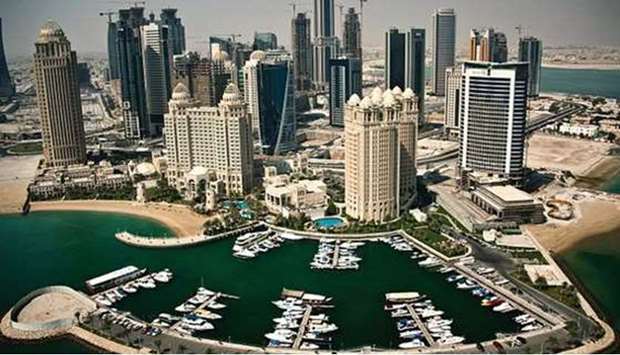Qatar's current account balance is expected to bounce back to 7.1% this year and 7.9% in 2022 from -3.4% of GDP in 2020, a Lloyds Bank update has shown.
General government debt has grown from 62.3% of GDP in 2019 to 71.8% in 2020 as the country continued to borrow on international markets. The International Monetary Fund anticipates a debt reduction this year and the next, with levels at 59.8% of GDP in 2021 and 53.9% in 2022.
Current account surplus narrowed to 2.4% of GDP in 2019 from 9.1% a year earlier as global energy prices fell, the update says.
However, the IMF expects this trend to be strengthened by the negative economic impact of the Covid-19 pandemic and the fall in oil prices.
In the medium term, expansion of the North Field gas projects is expected to be completed by 2024, further boosting gas output, Lloyds Bank said.
In February, Qatar Petroleum took the final investment decision for developing the NFE project, the world’s largest LNG project, which will raise Qatar’s production capacity from 77mn tonnes per year (mtpy) to 110 mtpy by 2025.
The project will also produce condensate, LPG, ethane, sulphur and helium.
It is expected to start production in the fourth quarter of 2025 and total production will reach about 1.4mn barrels oil equivalent per day.
The NFE project will be one of the energy industry’s largest investments in the past few years, in addition to being the largest LNG capacity addition ever, and the most competitive LNG project in the world.
New projects are planned in infrastructure and telecommunications, and various construction projects are in progress in preparation for the World Cup in 2022, Lloyds Bank said.
Inflation is estimated to have fallen to -0.7% in 2019 and -2.7% in 2020. The IMF estimates inflation to increase to 2.4% in 2021 and 2.9% in 2022 in its latest World Economic Outlook.
General government debt has grown from 62.3% of GDP in 2019 to 71.8% in 2020 as the country continued to borrow on international markets. The International Monetary Fund anticipates a debt reduction this year and the next, with levels at 59.8% of GDP in 2021 and 53.9% in 2022.
Current account surplus narrowed to 2.4% of GDP in 2019 from 9.1% a year earlier as global energy prices fell, the update says.
However, the IMF expects this trend to be strengthened by the negative economic impact of the Covid-19 pandemic and the fall in oil prices.
In the medium term, expansion of the North Field gas projects is expected to be completed by 2024, further boosting gas output, Lloyds Bank said.
In February, Qatar Petroleum took the final investment decision for developing the NFE project, the world’s largest LNG project, which will raise Qatar’s production capacity from 77mn tonnes per year (mtpy) to 110 mtpy by 2025.
The project will also produce condensate, LPG, ethane, sulphur and helium.
It is expected to start production in the fourth quarter of 2025 and total production will reach about 1.4mn barrels oil equivalent per day.
The NFE project will be one of the energy industry’s largest investments in the past few years, in addition to being the largest LNG capacity addition ever, and the most competitive LNG project in the world.
New projects are planned in infrastructure and telecommunications, and various construction projects are in progress in preparation for the World Cup in 2022, Lloyds Bank said.
Inflation is estimated to have fallen to -0.7% in 2019 and -2.7% in 2020. The IMF estimates inflation to increase to 2.4% in 2021 and 2.9% in 2022 in its latest World Economic Outlook.


